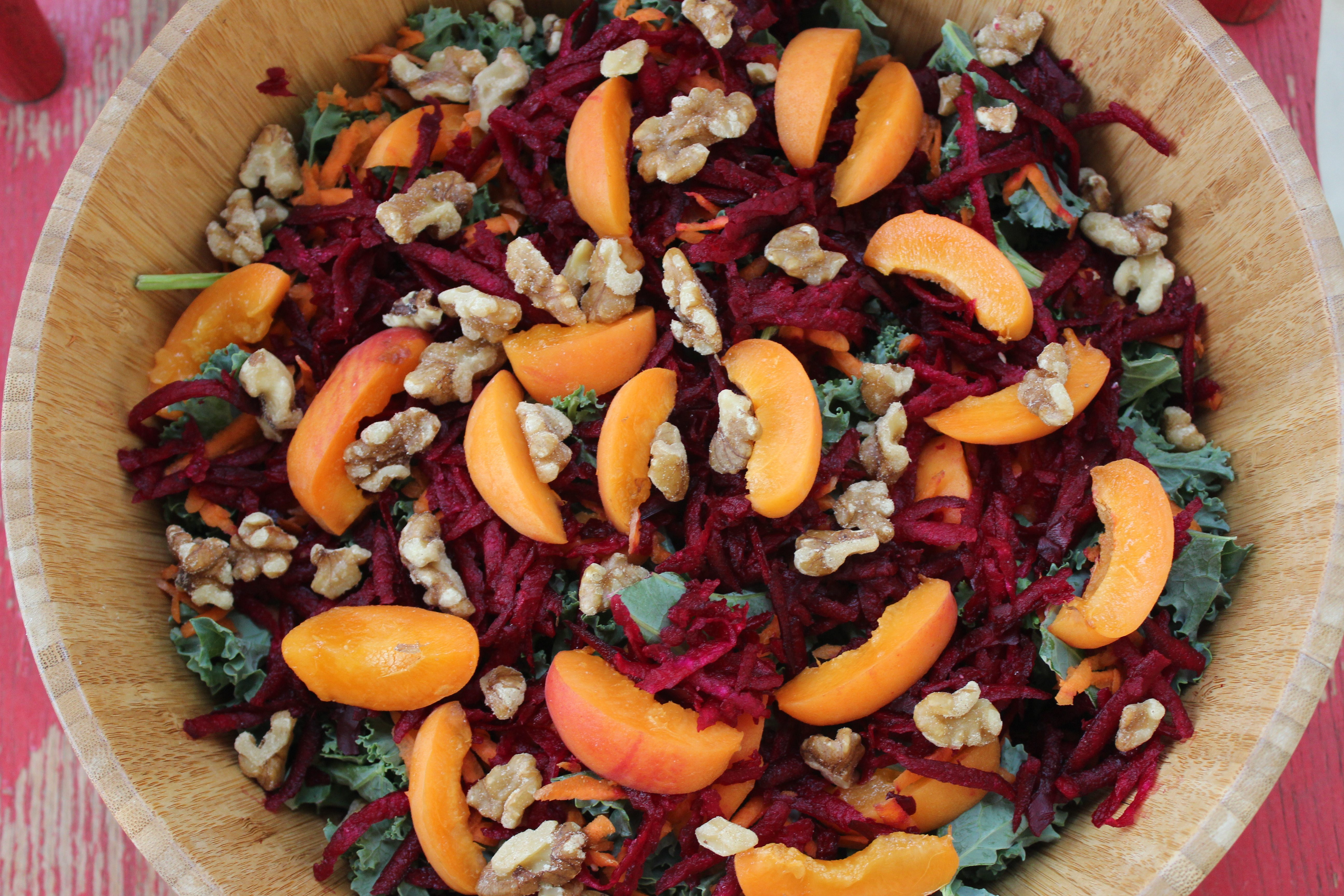“Eat food, not to much, mostly plants.” ~ Michael Pollan
These are famous words and we should actually try to follow them. Fruits and veggies are an important part of our diets, and organic should be chosen over conventionally grown produce. Organic produce tastes better and in reality is not as expensive, when you consider that its the actual cost of food. Conventionally grown food has been subsidized by the government, so it’s cheaper and the farming practices are worse for the environment and our health. I understand not all of us have the luxury to afford all organic produce so here is a list of fruits and veggies that should be bought organic and those that don’t matter as much.
Dirty Dozen:
- Strawberries
- Spinach
- Kale, Collard & Mustard Greens
- Nectarines
- Apples
- Grapes
- Peaches
- Cherries
- Pears
- Blueberries
- Green beans
- Sweet Bell Peppers & Hot Peppers
Try to by these foods organic, as they are most contaminated with toxins, chemicals and pesticides, especially the first 3 on the list. Green beans and leafy greens are also high in pesticides, but not high enough to make the list. Others include tomatoes, potatoes, celery, lettuce, squashes, cucumbers, raspberries, snap peas. This lists changes at times, so I will try to keep it updated. Visit EWG (Environmental Working Group) for more information.
Clean 15:
- Carrots
- Watermelon
- Sweet Potatoes
- Mangoes
- Mushrooms
- Cabbage
- Kiwi
- Honeydew
- Asparagus
- Sweat Peas – frozen
- Papaya
- Onions
- Sweet corn
- Pineapple
- Avocado
These foods are okay to by non-organic, as they have the least amounts of toxins, pesticides and chemicals, because of their thicker peels.
Michael Pollan’s Food Rules:
- Don’t eat anything your great grandmother wouldn’t recognize as food. -Guarantee she as never heard of go-gurts, popcorn chicken or poppers.
- Don’t eat anything with more than five ingredients, or ingredients you can’t pronounce. – In reality I can’t pronounce half the ingredients in most foods, but I know what they are: chemicals and preservatives.
- Stay out of the middle of the supermarket; shop on the perimeter of the store. – Here you’ll find fresh fruits and veggies, the deli, fresh eggs, and dairy products.
- Don’t eat anything that won’t eventually rot. – Some foods just don’t go bad, and that isn’t a good thing, because it means there’s lots of preservatives in it.
- It is not just what you eat but how you eat – Don’t eat until you are full, leave the table a little hungry, to allow time for your brain and stomach to communicate.
- Families traditionally ate together, around a table and not a TV, at regular meal times. – Take time to sit down with family or friends at your kitchen table to enjoy a meal. You are more aware of what you’re eating and appreciate the food more.
- Don’t buy food where you buy your gasoline.– There’s not much at a gas station that’s healthy. In the United States, it’s common to eat in the car, and most the time it’s not healthy food.
I find these rules to be practical and easy to remember. It’s simple, EAT WHOLE foods!! Foods in their natural state, not processed and loaded with sugars and preservatives.
Preservatives and Additives to Avoid:
- High Fructose Corn Syrup (HFCS) – Increased risk for diabetes, coronary heart disease, stroke and cancer. Used to preserve baked goods, and is easily blendable in drinks. It’s cheap and used in lots of products. Since we have so much corn in America, corn syrup is put in lots of food products.
- Monosodium Glutamate (MSG) – Mostly commonly found in Asian foods, but also in soups, salad dressings, & frozen entrees. It is known to cause headaches and nausea.
- Carrageenan – Made from red algae and seaweeds and is used as a thickener and emulsifier in ice creams, yogurt, cottage cheese, and soymilk. It causes inflammation in our bodies, which leads to a variety of other disorders such as heart disease, Alzheimers, and Parkinson.
- Sodium Nitrates – used to color our foods and add flavor to meats such as lunch meats, ham, hot dogs, etc. It is shown to cause cancer as it forms carcinogens.
- Aspartame – Artificial sweetener that does more harm than good. Found in almost all chewing gum. Negatively affects metabolism, and can cause cancer, headaches, dizziness, and hallucinations.
- Trans Fat – Raises our LDL cholesterol (bad cholesterol) and lowers HDL (good cholesterol). Trans fat are made by adding hydrogen to vegetable oils, in process known as hydrogenation. Trans fats are used to preserve foods and increase their shelf life. They increase risk for heart disease.
- BHA & BHT – These are found in cereals, chips, and chewing gum and are used to preserve fats. Can cause hyperactivity, asthma, dermatitis, and tumors.
- Food coloring – Can cause cancer and tumors. Found in candy, beverages, and baked goods.
- Hydrogenated Oils – Causes high cholesterol, because of their trans fat content, increasing risk for heart disease.
- Olestra – Used in foods that are fried and baked. Inhibits absorption of some nutrients and linked to gastrointestinal disease, diarrhea, gas, and cramps.
There are a variety of other food additives to avoid, but these are on the top of the list.
